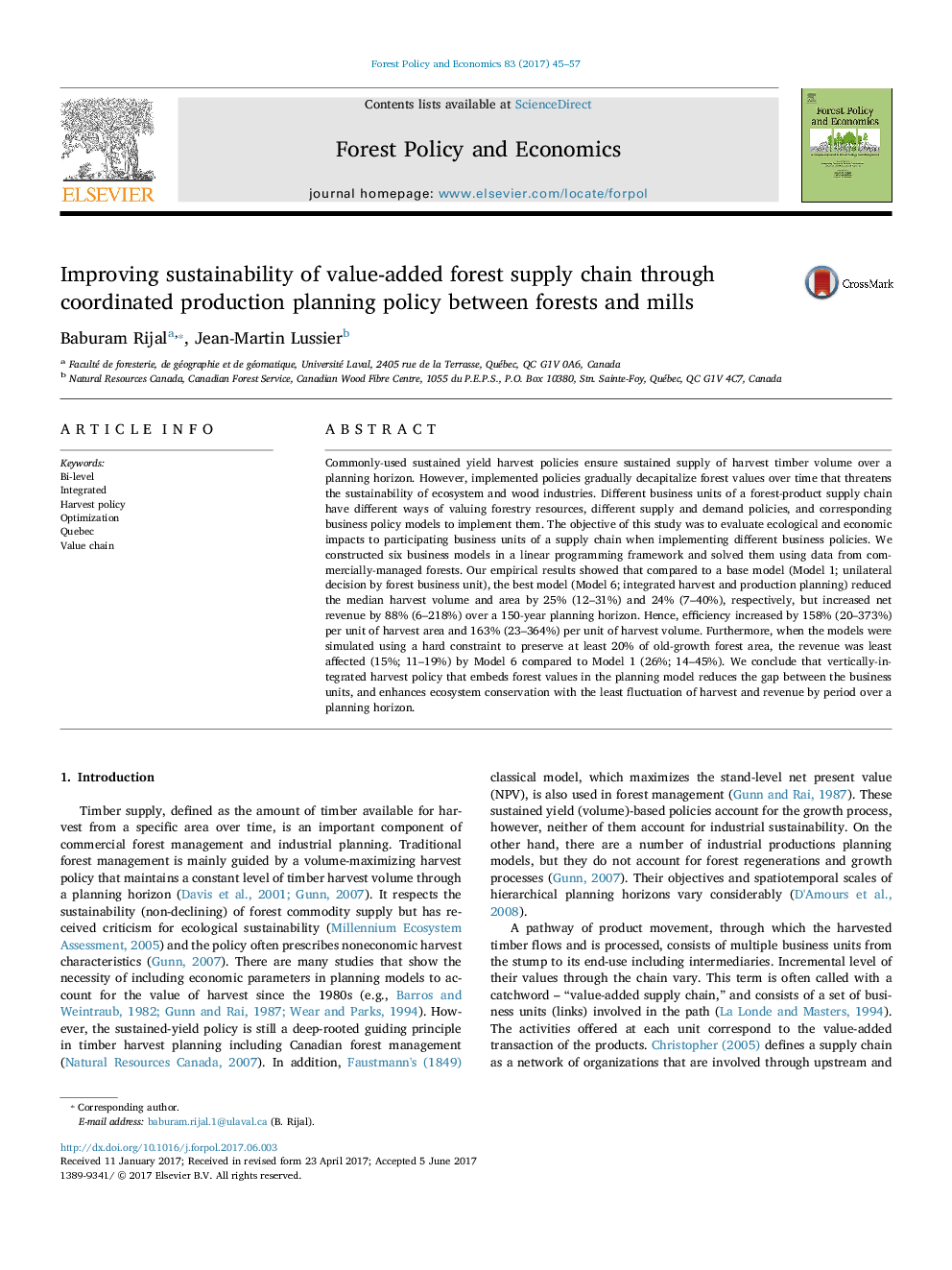ترجمه فارسی عنوان مقاله
بهبود پایداری زنجیره تامین جنگل های ارزشمند از طریق سیاست های هماهنگ تولید برنامه های تولید بین جنگل ها و کارخانه ها
عنوان انگلیسی
Improving sustainability of value-added forest supply chain through coordinated production planning policy between forests and mills
| کد مقاله | سال انتشار | تعداد صفحات مقاله انگلیسی |
|---|---|---|
| 88861 | 2017 | 13 صفحه PDF |
منبع

Publisher : Elsevier - Science Direct (الزویر - ساینس دایرکت)
Journal : Forest Policy and Economics, Volume 83, October 2017, Pages 45-57
ترجمه کلمات کلیدی
سطح بی، مجتمع، سیاست برداشت، بهینه سازی، کبک زنجیره ارزش،
کلمات کلیدی انگلیسی
Bi-level; Integrated; Harvest policy; Optimization; Quebec; Value chain;

